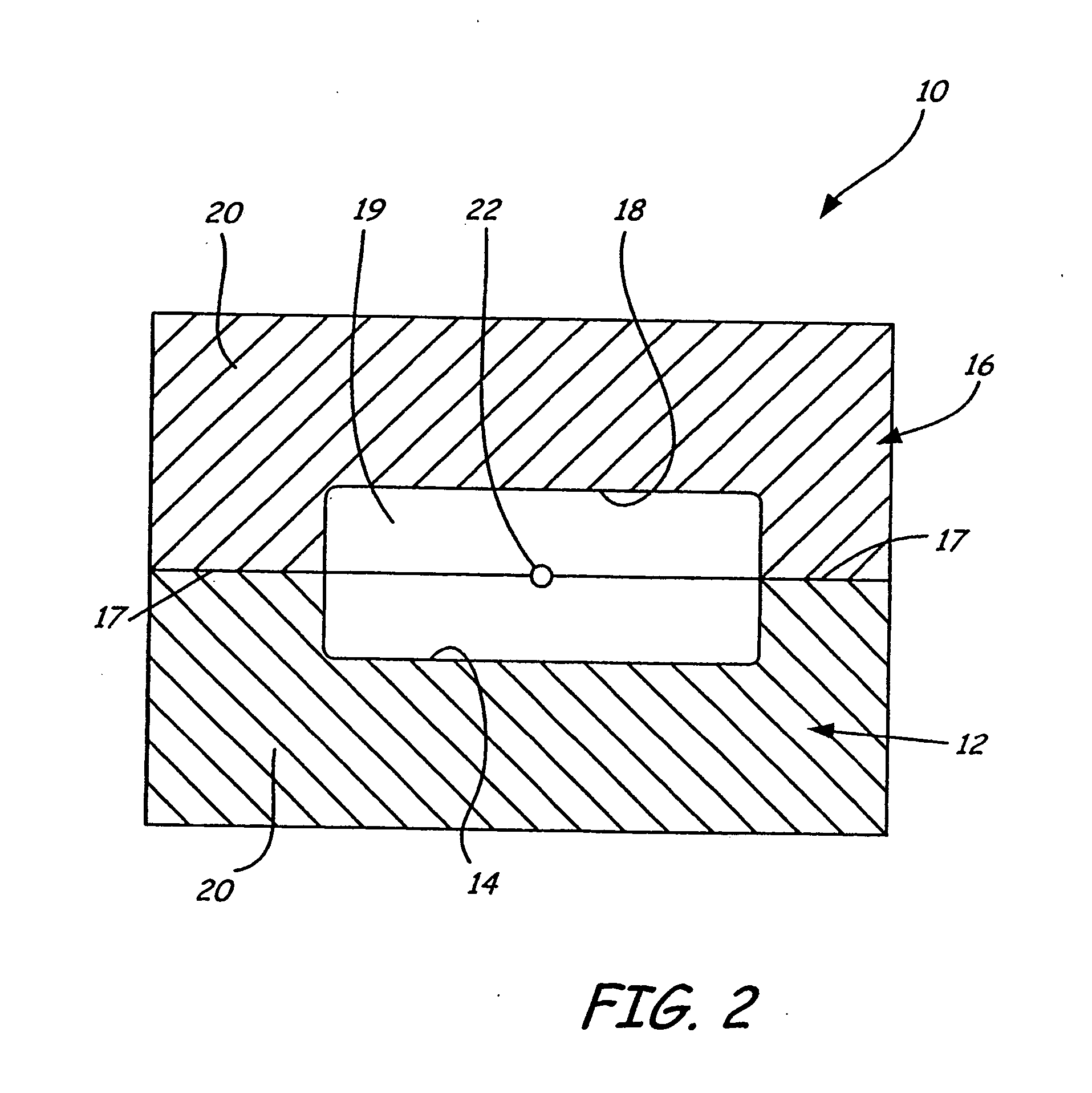Layered deposition bridge tooling
a bridge tooling and layering technology, applied in the direction of additive manufacturing with liquids, additive manufacturing processes, additive manufacturing apparatus, etc., can solve the problems of unreplicable final production parts strength, high cost, time and skill required to prepare mold tools, etc., to remove unintentional ridges in the surfa
- Summary
- Abstract
- Description
- Claims
- Application Information
AI Technical Summary
Benefits of technology
Problems solved by technology
Method used
Image
Examples
Embodiment Construction
[0015]FIG. 1 shows two halves of an exemplary mold tool 10 built in accordance with the present invention. A first portion 12 of mold tool 10 includes a recessed mold surface 14 corresponding to the shape of a first half of a desired prototype molded part. A second portion 16 of mold tool 10 includes a recessed mold surface 18 corresponding to the shape of a second half of the desired prototype molded part. The mold portions 12 and 16 each have a mating surface 17 and a base 20 shown in FIG. 2, which supports the mold surfaces 14 and 18 and the mating surfaces 17. When the mating surfaces 17 of the mold portions 12 and 16 are mated together as shown in FIG. 2, the mold surfaces 14 and 18 define a mold cavity 19, which has the shape of the desired prototype part. For prototype molded parts that have interior cavities, the mold tool 10 further comprises a mold core.
[0016] The mold portions 12 and 16 each also include a sprue channel 22, a vent channel 24, and four alignment holes 26....
PUM
| Property | Measurement | Unit |
|---|---|---|
| weight percent | aaaaa | aaaaa |
| weight percent | aaaaa | aaaaa |
| weight percent | aaaaa | aaaaa |
Abstract
Description
Claims
Application Information
 Login to View More
Login to View More - R&D
- Intellectual Property
- Life Sciences
- Materials
- Tech Scout
- Unparalleled Data Quality
- Higher Quality Content
- 60% Fewer Hallucinations
Browse by: Latest US Patents, China's latest patents, Technical Efficacy Thesaurus, Application Domain, Technology Topic, Popular Technical Reports.
© 2025 PatSnap. All rights reserved.Legal|Privacy policy|Modern Slavery Act Transparency Statement|Sitemap|About US| Contact US: help@patsnap.com



